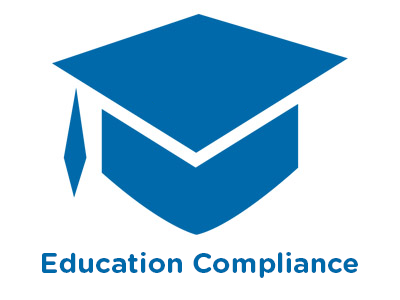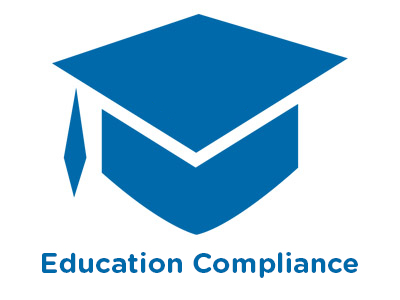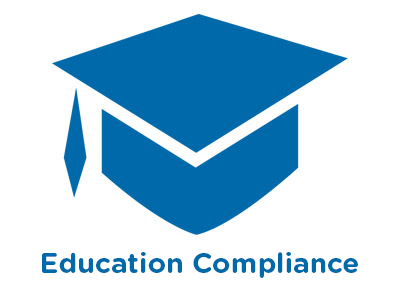 |
Coaching: Fundamentals of Coaching (Instructor Guide) |
1.00 |
Coaching is the continuous effort to help employees maximize their abilities through personalized counseling and advice. The coaching process not only trains employees to become familiar with business procedures and expectations, but also motivates them to reach both individual and company goals.
Coaching is beneficial to employees because it encourages them to discover their worth and potential. Through proper coaching sessions, employees build confidence, improve their work habits, and increase their productivity.
In this course you will learn to:
1. Define coaching and identify the qualities of an effective coach
2. Build a coaching foundation and plan a coaching strategy.
This Instructor's Edition of this course includes notes and suggestions to assist you in presenting the material, whether in an in-person classroom setting or as an instructor-led online or distance-learning course. It also provides you with the answers to questions found in mid-lesson activities, as well as in the quiz that concludes the course. |
 |
Coaching: Interpersonal Meetings (Instructor Guide) |
0.75 |
As a coach, your communication skills are critical to your success and the employees you are coaching. In many office environments, it can be tempting to get through the day without much personal contact by relying on technology. However, nothing can replace the benefits of personal interaction, or face-to-face communication.
This Instructor's Edition of this course includes notes and suggestions to assist you in presenting the material, whether in an in-person classroom setting or as an instructor-led online or distance-learning course. It also provides you with the answers to questions found in mid-lesson activities, as well as in the quiz that concludes the course. |
 |
Coaching: The Coaching Process (Instructor Guide) |
1.50 |
In this course you will learn to: establish a solid coaching foundation by creating and maintaining healthy coach-employee relationships, be an effective coach by understanding your coaching objectives and communicating the expectations and goals to employees, and provide employees with positive and constructive feedback by monitoring and evaluating their performance.
This Instructor's Edition of this course includes notes and suggestions to assist you in presenting the material, whether in an in-person classroom setting or as an instructor-led online or distance-learning course. It also provides you with the answers to questions found in mid-lesson activities, as well as in the quiz that concludes the course. |
 |
Conducting Meetings: Managing Meetings (Instructor Guide) |
0.67 |
In this course you will learn to: identify the types of meeting leaders and the characteristics of an effective meeting leader. identify the process to follow when making decisions in a meeting, and explain how to identify and minimize group think in meetings.
This Instructor's Edition of this course includes notes and suggestions to assist you in presenting the material, whether in an in-person classroom setting or as an instructor-led online or distance-learning course. It also provides you with the answers to questions found in mid-lesson activities, as well as in the quiz that concludes the course. |
 |
Conducting Meetings: Fundamentals of Conducting Meetings (Instructor Guide) |
0.67 |
Meetings allow groups to function, define goals, contribute to participants’ morale and status, as well as develop organizational culture. During meetings, participants are able to exchange information and update one another on current events. When information is shared among participants, they are able to work together to create ideas and solutions, and make decisions to progress toward the group’s goals.
In order for a group to function effectively, participants must be working toward accomplishing a common goal. Meetings allow participants to define goals as a group, which helps them agree on the terms of the goals, such as how and when they’ll be accomplished.
When the meeting leader encourages input from participants, employee morale increases. Encouraging communication satisfies the participants’ desire to play an active role in the organization. When participants understand that their opinions are valued, they feel that they’ve contributed to their organization.
Meetings also help develop the organization’s culture when meeting leaders demonstrate the values and attitudes preferred by the organization. Leaders display organizational values in meetings to reinforce the behavior they desire from participants.
In this course you will learn to: identify the benefits, types and misconceptions about meetings, plan a meeting, participate in a meeting, and close a meeting.
This Instructor's Edition of this course includes notes and suggestions to assist you in presenting the material, whether in an in-person classroom setting, or as an instructor-led online or distance-learning course. It also provides you with the answers to questions found in mid-lesson activities, as well as in the quiz that concludes the course. |
 |
Overview of the Americans with Disabilities Act |
0.50 |
The Americans with Disabilities Act prohibits discrimination based on disability by protecting qualified individuals with disabilities from employment discrimination, and by requiring employers to provide reasonable accommodations. The Americans with Disabilities Act also protects qualified persons with disabilities from discrimination in many areas of higher education, including admission, academics, and research. It applies to all post-secondary educational programs, whether or not they receive federal financial assistance. |
 |
Geriatrics Block: Communication |
0.59 |
In Geriatrics Block: Communication, you will learn about the proper ways to communicate with geriatric patients. You'll learn about causes and signs of hearing loss and aphasia and how to recognize both in patients. You will discover how to effectively and properly communicate with older patients, including those who have hearing loss or aphasia. Challenges that commonly arise in communications between nursing home staff and EMS personnel will also be discussed. You'll learn about methods to avoid confrontational interaction, and will be able to identify ways to communicate effectively with nursing home staff to provide timely and appropriate medical care. |
 |
Animal Welfare Spanish |
1.00 |
|
 |
Data Security Training |
1.00 |
Data hacks in higher education are the second-highest category of reported industry breaches, accounting for 17 percent of all reported hacks. Resolving data hacks is expensive, costing anywhere from hundreds of thousands to millions of dollars. Understanding how to maintain data security is key to preventing hacks and keeping sensitive data private. |
 |
Export Control in Higher Education |
1.00 |
Colleges and universities are at the cutting edge of research in strategic technologies, microsystems engineering, astrophysics and imaging, and computing and information systems, among other fields. Our government controls the export of sensitive equipment, software, and technology as a way to protect our national security interests, and promote our foreign policy objectives. Export control describes the regulatory system in place to do so. |











